Workday Training in New York City, New York, USA
Workday Leave and Absence Management Training in New York City New York USA
Mastering Workday Leave and Absence Management Through Balance Periods
Workday Leave Absence provides essential features and functionalities for efficiently managing time and schedules.
Understanding balance periods within Workday Leave Absence helps monitor time effectively while ensuring accurate accruals and calculations.
Workday Leave Absence utilises a balance period as its absence year, which is thoroughly addressed during the Workday Leave and Absence Management Training in New York.
In India, this typically spans from January through December, in other regions (for instance, Europe), such as August, it might begin and end by July.
Managing Accruals and Period Schedules in Workday Leave Absence Management
Workday Leave Absence uses a period schedule, which determines the frequency of accrual.
For instance, setting the accrual to bi-monthly will allocate leave twice a month.
Tracking the balance within Workday Leave Absence ensures that necessary fields appear for adjustments as planned.
Workday Leave and Absence Management Training in New York City explains how tracking may restrict certain functionalities, and how Workday Leave and Absence generates periods based on predefined rules.
Typically, in a bi-weekly setup, this equates to 26 periods within a 52-week year.
Workday Leave Absence enables organisations to customise balance periods according to their unique requirements.
Some may opt for monthly accruals, while others may prefer annual accruals.

The Role of Period Schedules in Workday Leave Absence Management Accruals
Period schedules in Workday Leave Absence are a vital asset for managing employee accruals.
They determine when and how frequently leave allocations should occur for an efficient payroll process.
Organisations using Workday Leave Absence can create periods to meet varying timeframes, as detailed in Workday Leave and Absence Management Training in the USA.
Flexibility ensures accurate accrual tracking.
Structuring Leave Accruals with Templates in Workday Leave Absence Management
Workday Leave Absence utilises various templates for leave accruals, creating consistency across employee groups and payroll setups.
Payroll integration within Workday Leave Absence enables HR teams to process payouts more efficiently by accurately matching leave balances with earnings.
Configuring Workday Leave Absence correctly involves careful consideration of balance periods and accrual frequencies to achieve optimal performance, as emphasised in Workday Leave and Absence Management Training in New York.
Organisations should adjust these settings according to their operational needs.
Workday Leave Absence Management Anniversary Balance Periods and Customisation
Workday Leave Absence supports anniversary balance periods to help employees ensure that leave accruals align with specific work anniversaries.
Employees can view balance periods through Workday Leave Absence’s detailed reports.
These reports help track accrual history and ensure compliance with company policies and procedures.
Workday Leave and Absence Management Training in New York City covers how Workday Leave Absence’s user-friendly interface enables straightforward configuration of balance periods and period schedules.
Organisations may wish to implement Workday Leave Absence’s annual balance period feature to track yearly leave allocations.
They can tailor this based on operational needs.
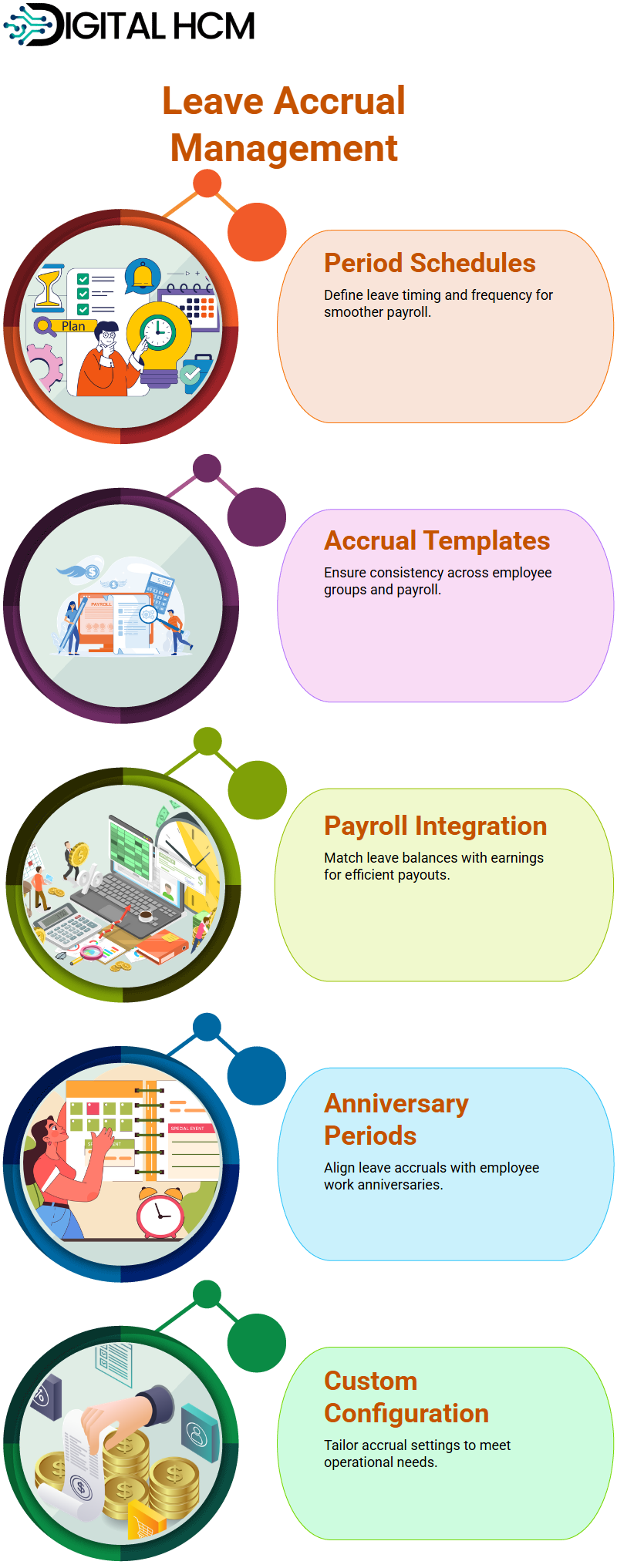
Flexible Configuration and Compliance in Workday Leave Absence Management
Workday Leave Absence makes adjustments easy by seamlessly balancing periods and accruals across balance periods, thereby complying with regional labour regulations.
Workday Leave Absence’s period schedule configuration feature provides organisations with a powerful tool for customising leave accrual to meet specific workforce needs.
To ease administrative burdens and improve leave management, gaining a deep understanding of Workday Leave Absence is crucial, as extensively covered in Workday Leave and Absence Management Training in the USA.
Effective Date Configuration through Workday Leave Absence Management
Navigating Workday Leave Absence can be challenging at first, but once you understand its structure, the process becomes much clearer.
One key element is date configuration, which directly affects leave balance.
Employees won’t be able to request leave beyond a specific year if periods haven’t been planned beyond it.
We have seen instances in which leave periods were scheduled only up to 2021, creating complications when trying to set leave for 2022 and beyond.
Solution: Ensuring that period schedules include dates for the following year.
Period schedules within Workday Leave Absence are crucial for identifying available dates to create effective absence plans, a topic emphasised in Workday Leave and Absence Management Training in New York.
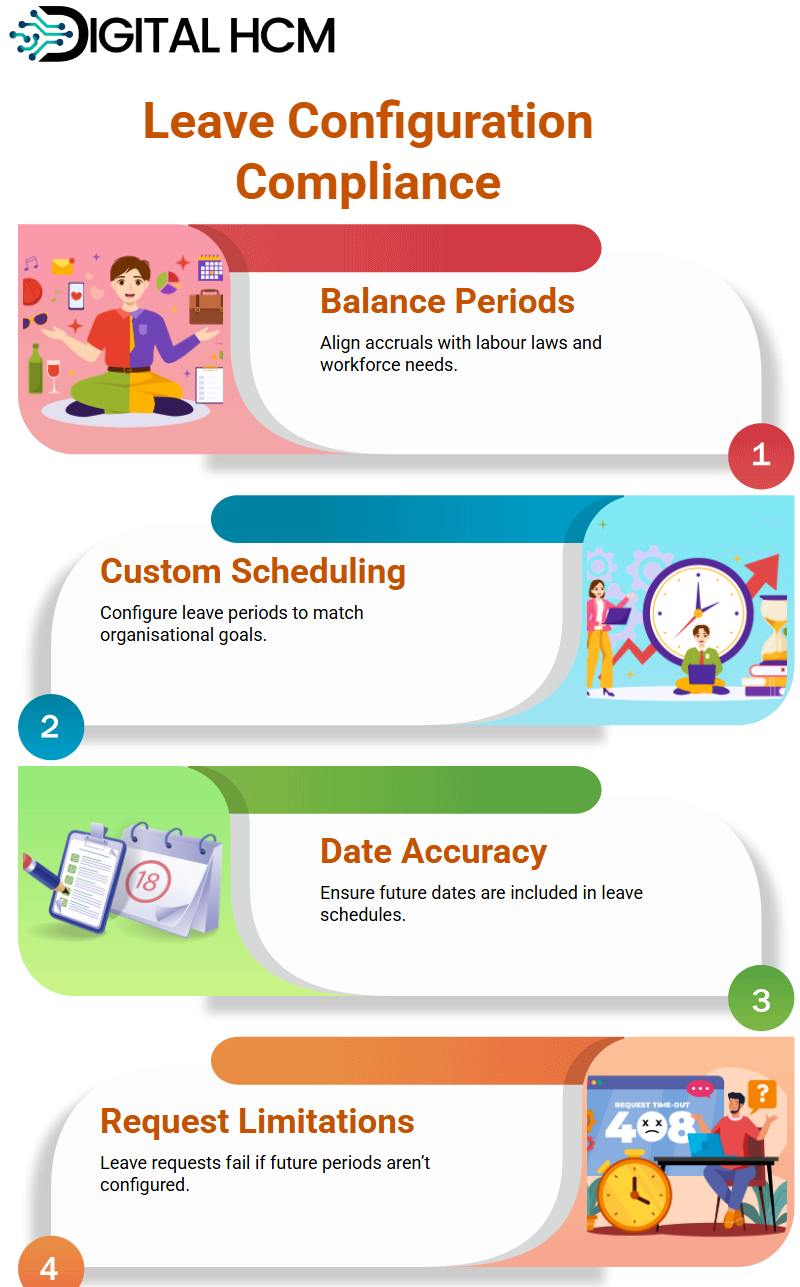
Setting Up Periods in Workday Leave Absence Management
Periods play a crucial role in Workday Leave Absence. Each period requires an effective start and end date.
Most organisations create annual leave periods that start on January 1st and end on December 31st for this purpose.
Without proper scheduling, employees could discover that their desired absence dates are no longer available.
Workday Leave and Absence Management Training in New York City demonstrates how organisations using WLA can customise leave balance visibility to enhance privacy and control.
Specific categories, like jury duty or bereavement leave, may not appear on an employee’s profile but can still be requested as needed.
Configuring Workday Leave Absence Management Time-Off Plans
Setting up time-off plans in Workday Leave Absence requires carefully configuring eligibility criteria, so employees can either request time off directly or enter absenteeism details while recording work hours.
With proper entry methods selected, managing leaves becomes much simpler.
Organisations should additionally specify workdays and holidays as deduction days when taking leave deductions.
When leave spans over several days, any applicable holidays within that span may be deducted or not, depending on the configuration.
Selecting non-holiday dates ensures employees do not lose leave balance on public holidays.
Creating Workday Leave Absence Management Accruals
Workday Leave Absence utilises accruals as the mechanism for distributing leave balances among employees.
Utilising its system, organisations can set accrual frequencies, carryover limits and eligibility rules.
For instance, granting all eligible staff 25 days’ leave annually through accrual calculations.
According to Workday Leave and Absence Management Training in the USA, priority settings in Workday Leave and Absence enable employees to select one leave plan over another when they overlap.
This means that if an employee qualifies for two different leave plans simultaneously, only the plan with the higher priority settings will be utilised first.
Ensuring these settings are correctly configured can prevent inconsistencies in leave allocation and ensure equitable leave usage.
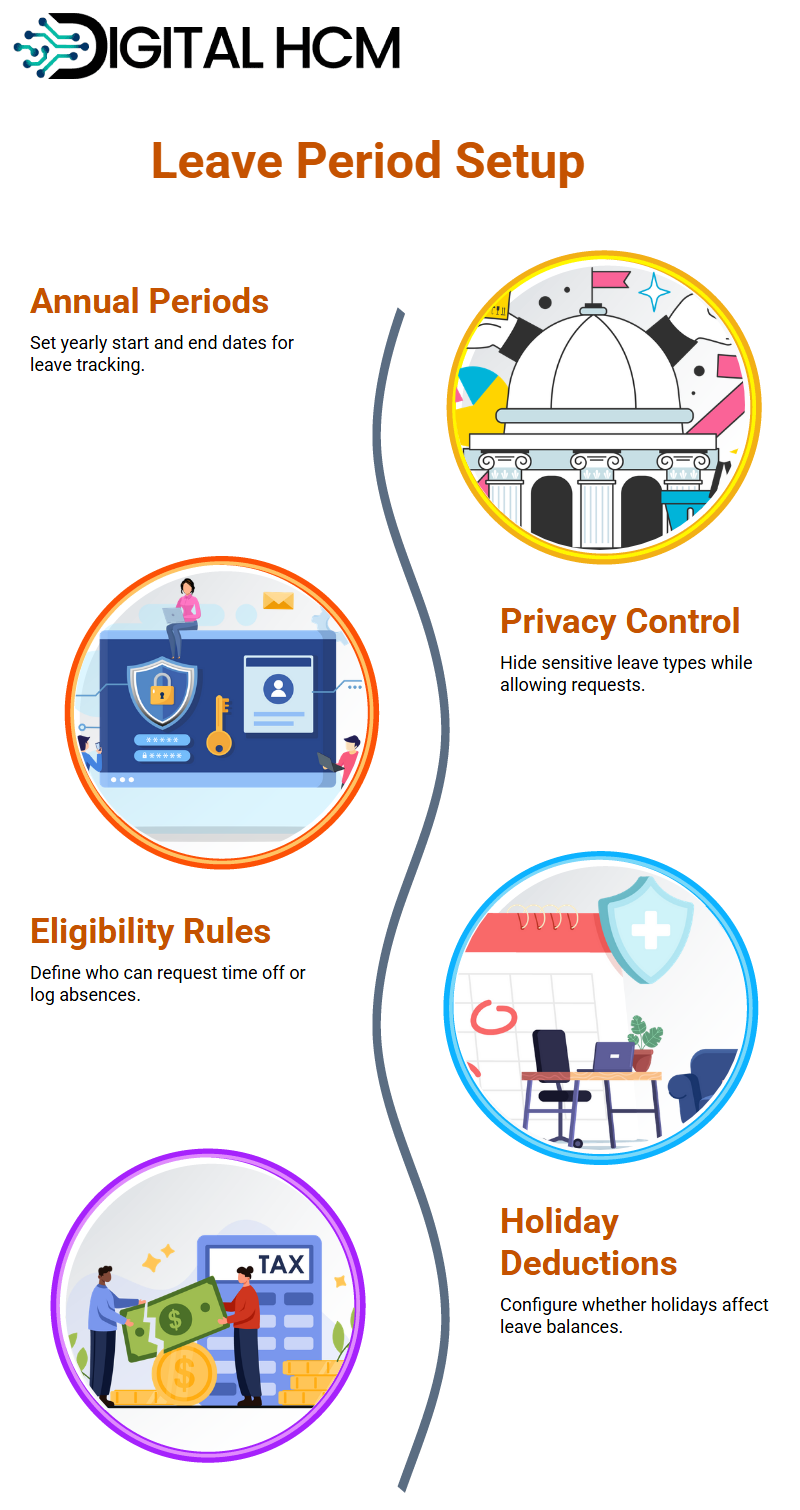
Understanding Workday Leave Absence management Leave Accrual Frequencies
Utilising Workday Leave Absence’s accruals feature is key for adequate time off management within any organisation, ensuring that employees receive their entitlement in a structured and consistent manner.
Choosing how employees receive their leave balances, often every month, allowing for incremental increases, is a key setup step in Workday Leave Absence, covered during Workday Leave and Absence Management Training in New York.
At the same time, annual provides a single lump-sum increase annually.
Similar to monthly options, semi-monthly and bi-weekly options provide balance updates twice each month, while weekly plans add balance every seven days.
Flexible Eligibility Controls in Workday Leave Absence Management
Workday Leave Absence has stringent validation rules in place to ensure compliance and accurate tracking of leave requests from employees.
Employees cannot request leave for less than half a day of PTO, a rule covered during Workday Leave and Absence Management Training in New York City.
Workday Leave Absence can also limit the total number of leave days taken at once in any consecutive period, while offering greater control over eligibility rules, which can be overridden according to organisational needs, providing more control over employees’ time off management.
Employee Interaction Through Time Off Requests using Workday Leave Absence Management
Workday Leave Absence enables employees to interact with it by utilising its time-off feature, rather than directly managing accruals.
As a result, when employee requests time off, their balance is updated accordingly.
Workday Leave Absence offers customizable leave reasons to improve data collection, such as prompting employees seeking sick leave to specify any associated ailments, including fever or cough.
This configuration ensures detailed reporting in Workday Leave and Absence; a key topic covered in Workday Leave and Absence Management Training in the USA.
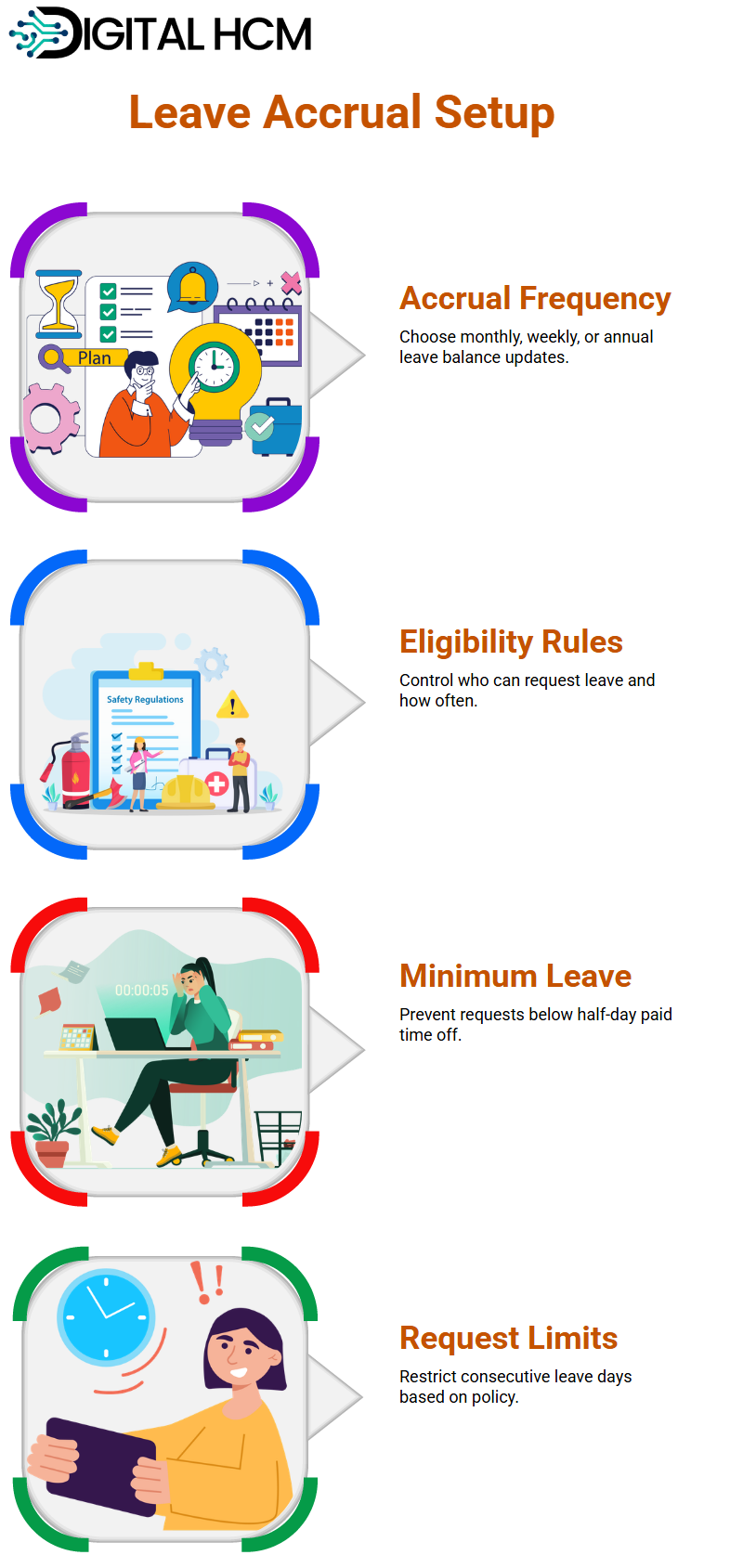
Enhancing Workday Leave Absence Management Organisational Productivity
Workday Leave Absence requires organisations to manage various settings, such as start dates, categories, balance calculations, and eligibility rules, for employees taking time off work due to absence.
While this system may initially appear complex and convoluted, with practice, it becomes easier to use.
Workday Leave and Absence Management Training in New York emphasises that consultancies implementing Workday Leave and Absence must fully understand their clients’ requirements for proper configuration.
Clients purchasing licenses that require this function must decide whether they prefer to implement it internally or seek outside assistance when setting up the settings themselves.
Workday Leave Absence provides an efficient time-off management system, increasing organisational productivity and employee happiness simultaneously.
Boosting Expertise with Workday Leave Absence Management Launch Certification
Have you taken other Workday courses before and heard about Workday Leave Absence Launch Certification?
Ideally, Workday provides these certifications to ensure professionals have a thorough understanding of how Leave Absence can be implemented and administered effectively.
This process, highlighted in Workday Leave and Absence Management Training in New York City, translates Workday Leave Absence HDLs into structured Workday formats to ensure a smooth transition for businesses.
How the Workday Leave Absence Management Workbook Guides System Setup?
Workday Leave Absence relies on structured data found within its workbook for customising its processes for an individual company.
The document holds all the relevant details required.
Regardless of who provides it, this workbook contains data illustrating Workday Leave Absence configurations, ensuring that all stakeholders involved have an in-depth understanding of its workflows.
Workday Leave and Absence Management Training in New York City emphasises the consultant’s responsibility to properly implement the workbook to ensure efficient Workday Leave and Absence processes.
Guiding Country HR Through the Workday Leave Absence Management Workbook
Before passing off a Workday Leave Absence workbook to a country HR representative, it’s critical that they fully comprehend its significance.
Workday Leave and Absence Management Training in the USA emphasises that merely handing over this document won’t suffice; users need to comprehend how its data fits into a successful Workday Leave Absence implementation.
By leading stakeholders through the implementation of a Workday Leave Absence workbook, you can ensure a seamless transition and accurate data input, making the entire process far more effective.
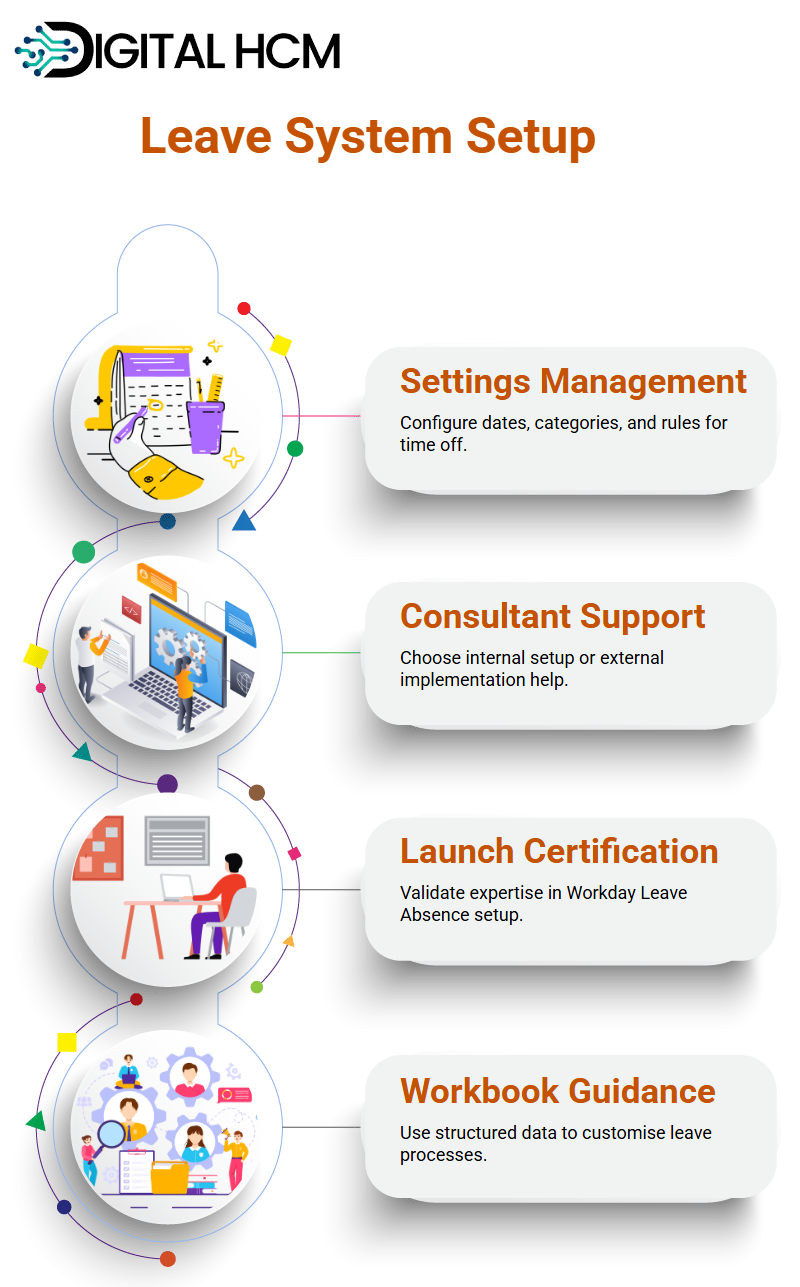

James

Success in your career comes from curiosity, courage, and consistency. Stay committed, stay curious and never stop learning.
